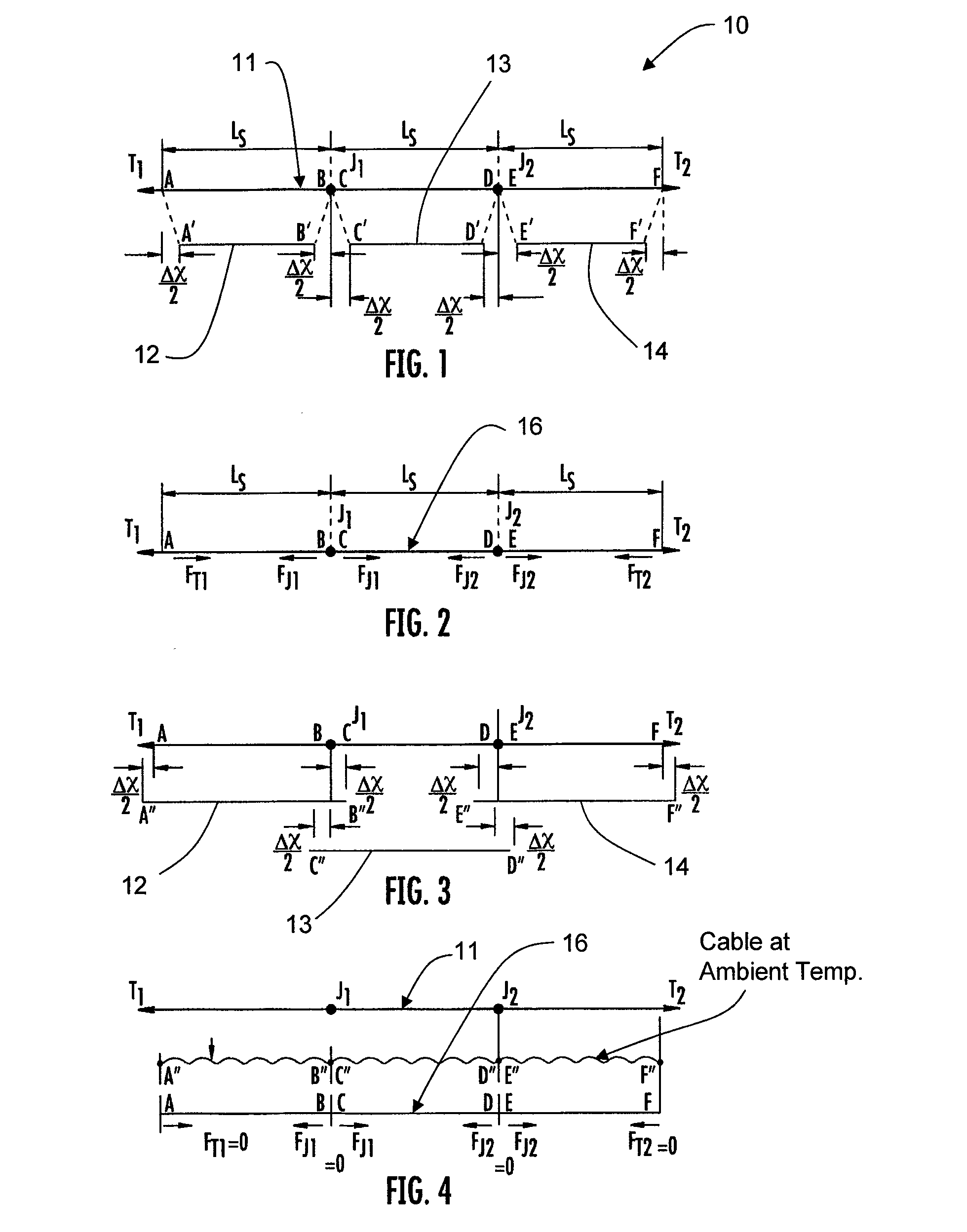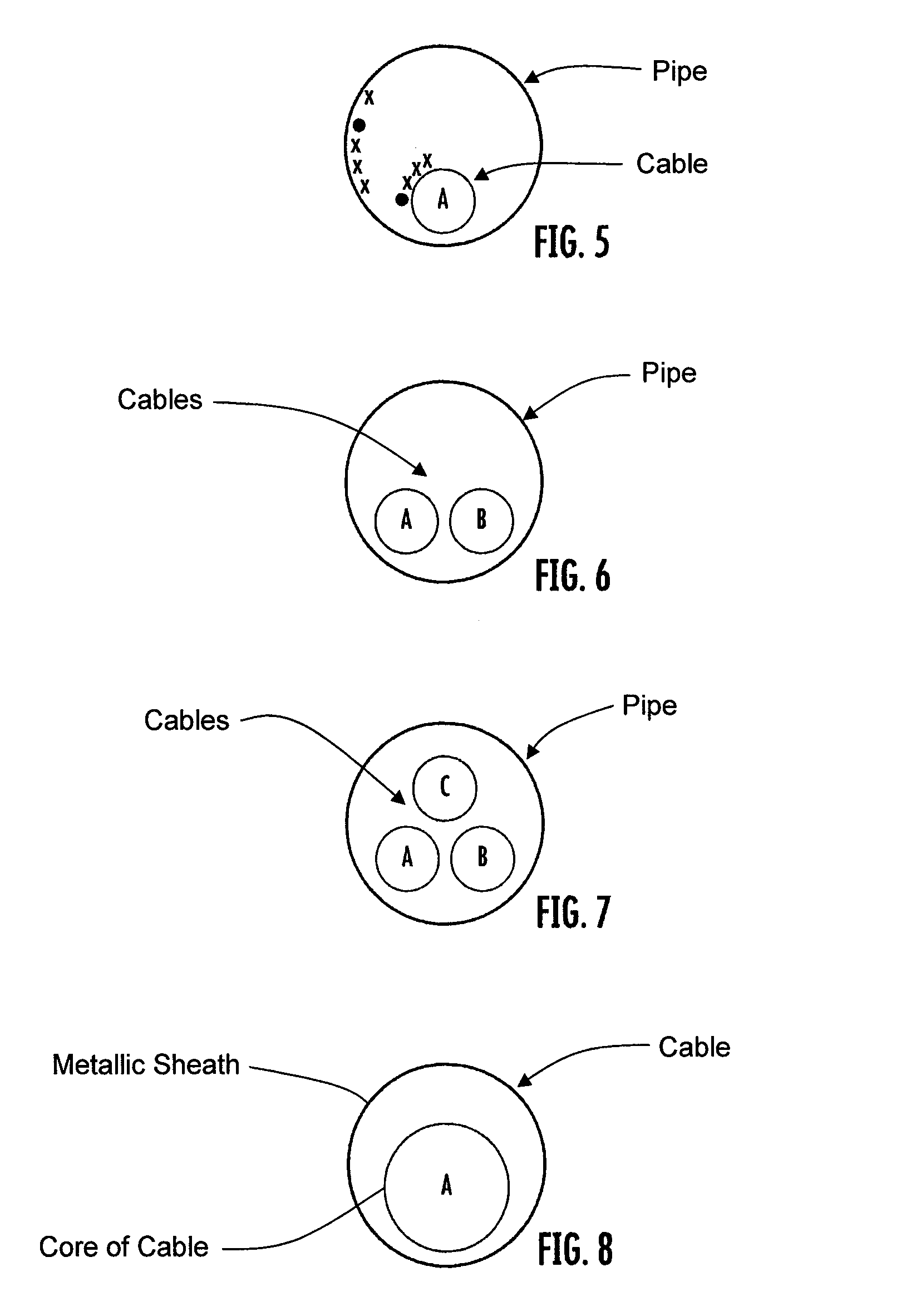Thermal contraction compensation for superconducting and cryo-resistive cables
- Summary
- Abstract
- Description
- Claims
- Application Information
AI Technical Summary
Benefits of technology
Problems solved by technology
Method used
Image
Examples
Embodiment Construction
[0025]Referring to the drawings, a conventional uncompensated system is shown in FIG. 1. An HTSC or cryogenic cable system 10 with a pipe 11 extending between points A and F is illustrated. Inside the pipe 11 are three spans of cable 12-14 laid end to end, A′-B′, C′-D′ and E′-F′, of nominal equal span lengths LS, with cable terminations T1 and T2 and straight joints J1 and J2 which join the spans together. The positions of the terminations, T1 and T2, and cable joints, J1 and J2, are fixed in relation to the ground. The cables 12-14 are pulled into each pipe span A-B, C-D, and E-F, and are jointed to form a single cable 16, as shown in FIG. 2. The pipe 11 is then closed and sealed over the joints J1 and J2. Coolant is introduced either into the pipe 11 or into a second pipe (not shown) that surrounds pipe 11. The cable 16 is then cooled down to its operating temperature.
[0026]As shown, if the cable lengths had not been jointed together they would be free to contract a total length Δ...
PUM
| Property | Measurement | Unit |
|---|---|---|
| Temperature | aaaaa | aaaaa |
| Length | aaaaa | aaaaa |
| Force | aaaaa | aaaaa |
Abstract
Description
Claims
Application Information
 Login to View More
Login to View More - R&D
- Intellectual Property
- Life Sciences
- Materials
- Tech Scout
- Unparalleled Data Quality
- Higher Quality Content
- 60% Fewer Hallucinations
Browse by: Latest US Patents, China's latest patents, Technical Efficacy Thesaurus, Application Domain, Technology Topic, Popular Technical Reports.
© 2025 PatSnap. All rights reserved.Legal|Privacy policy|Modern Slavery Act Transparency Statement|Sitemap|About US| Contact US: help@patsnap.com



